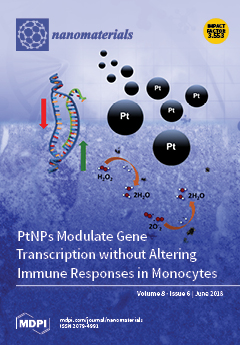1
Centro de Investigación y Asistencia en Tecnología y Diseño del Estado de Jalisco, A.C., Av. Normalistas 800, Colinas de la Normal, Guadalajara 44270, Mexico
2
Instituto Tecnológico Superior de Zongolica, Km. 4 Carretera a la Compañía, Zongolica, Veracruz 95005, Mexico
3
Centro de Investigación y Asistencia en Tecnología y Diseño del Estado de Jalisco, A.C., Clúster Científico y Tecnológico Biomimic®, Carretera antigua a Coatepec No. 351, Colonia El Haya, Xalapa, Veracruz 91070, Mexico
4
Unidad de Servicios de Apoyo en Resolución Analítica, Universidad Veracruzana, Apartado Postal 575, Xalapa, Veracruz 91190, Mexico
5
Centro de Investigación en Alimentación y Desarrollo A. C., Grupo de Investigación en Biopolímeros, Carr. a La Victoria km. 0.6, Hermosillo 83304, Mexico
6
School of Food Science and Nutrition. University of Leeds. Woodhouse Ln, Leeds LS2 9JT, UK
7
Laboratorio de Bioingeniería Molecular a Multiescala, Facultad de Ciencias, Universidad Autónoma del Estado de México, Av. Instituto Literario 100, Toluca 50000, Mexico
8
División de Ingeniería Química y Bioquímica, Tecnológico de Estudios Superiores de Ecatepec, Av. Tecnológico s/n, Ecatepec 55210, Mexico
Abstract
The transport of hydrophobic drugs in the human body exhibits complications due to the low solubility of these compounds. With the purpose of enhancing the bioavailability and biodistribution of such drugs, recent studies have reported the use of amphiphilic molecules, such as phospholipids,
[...] Read more.
The transport of hydrophobic drugs in the human body exhibits complications due to the low solubility of these compounds. With the purpose of enhancing the bioavailability and biodistribution of such drugs, recent studies have reported the use of amphiphilic molecules, such as phospholipids, for the synthesis of nanoparticles or nanocapsules. Given that phospholipids can self-assemble in liposomes or micellar structures, they are ideal candidates to function as vehicles of hydrophobic molecules. In this work, we report mesoscopic simulations of nanoliposomes, constituted by lecithin and coated with a shell of chitosan. The stability of such structures and the efficiency of the encapsulation of capsaicin, as well as the internal and superficial distribution of capsaicin and chitosan inside the nanoliposome, were analyzed. The characterization of the system was carried out through density maps and the potentials of mean force for the lecithin-capsaicin, lecithin-chitosan, and capsaicin-chitosan interactions. The results of these simulations show that chitosan is deposited on the surface of the nanoliposome, as has been reported in some experimental works. It was also observed that a nanoliposome of approximately 18 nm in diameter is stable during the simulation. The deposition behavior was found to be influenced by a pattern of N-acetylation of chitosan.
Full article






